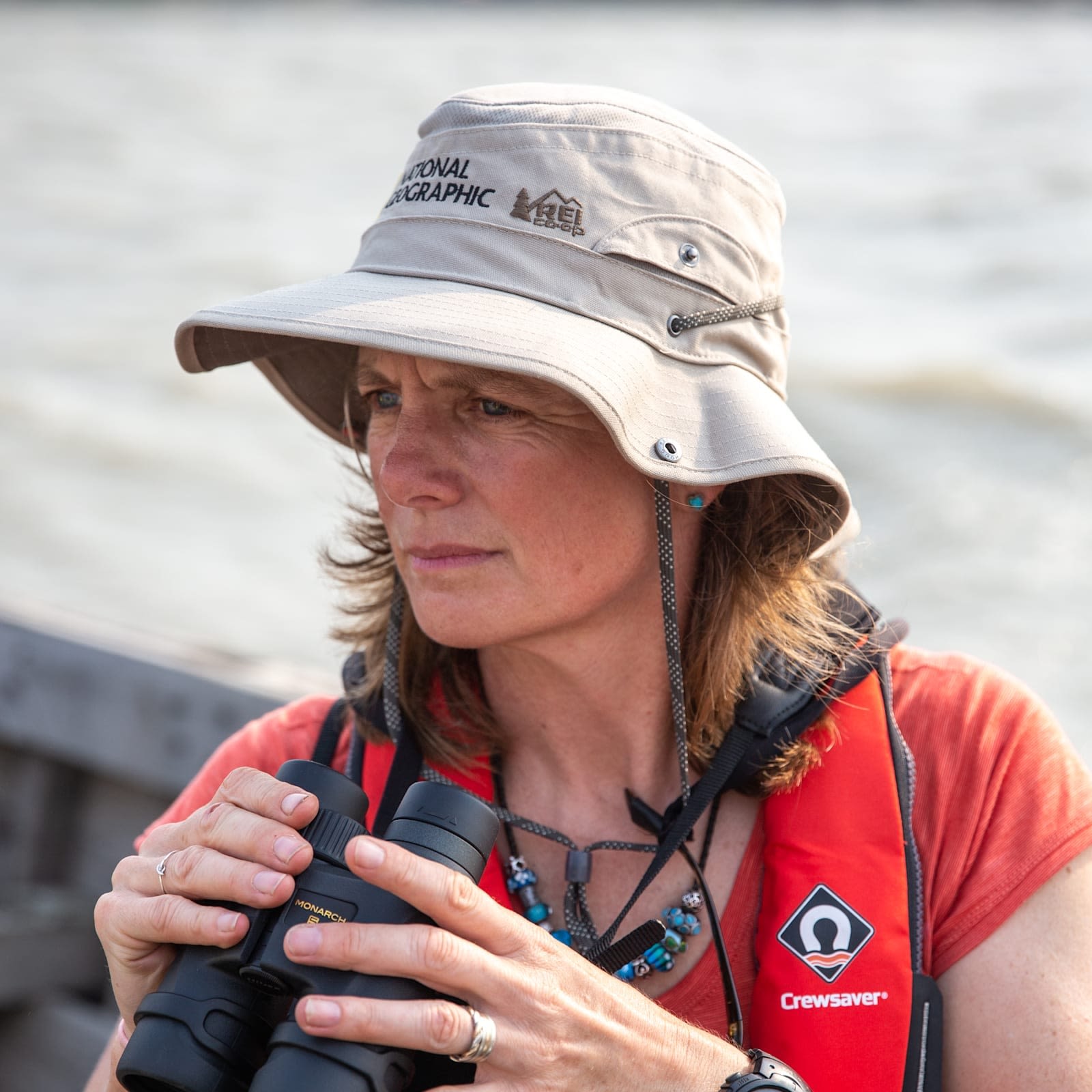The women working to prevent plastic from reaching the ocean
Picture the scene. It’s early morning and the sun is rising as a riverboat drops anchor on the river Padma, the name for the Ganges river, as it flows through Bangladesh.
A team of scientists gather a rather random set of equipment – clipboards, dictaphones, GPS units, quadrats, tapes and a research Unmanned Aerial Vehicle (UAV) – and are shuttled ashore to begin work for the day.
A few of us remain on the small boat and head to the middle of the river to begin sampling. Perhaps unsurprisingly, we attract a crowd of curious bystanders wherever we go. There are a lot of us, we are an international group (from Bangladesh, India, the UK, USA, and Canada) and almost all of us are women. We are National Geographic Society’s “Sea to Source:Ganges” expedition team.
Our quest is two-fold: conducting robust science and finding solutions to the plastic pollution crisis. As attention grows around the issue of plastic pollution and our newsfeeds are filled with emotive imagery of plastic waste and calls to action, it is important we inform decisions with data.
One gap in knowledge has been our understanding of the flow of plastic from major river systems to the ocean, with current estimates based on highly variable mathematical models. So, with the National Geographic team, and Professor Jenna Jambeck, my science co-lead from the University of Georgia, we set out to try and get some real insight into how plastic gets from land to the river to the sea, and most importantly, to identify interventions that could make the most change.
We chose the best scientists for the team – microplastics experts, biologists, social scientists, engineers, and technology experts, then realised they were all women scientists. Through our partners in Bangladesh and India, we provided additional opportunities to involve local female scientists, adding anthropologists, ecologists and hydrodynamic modellers to the skillsets.
The expedition was a unique opportunity for all of us to combine our respective knowledge and skills, sampling plastic in the water, sediment, air, and riverbank, mapping waste management systems and litter profiles, documenting plastic supply chains and understanding the behaviours, attitudes and perceptions of local communities. Our journey was incredible, difficult, rewarding and intense. The scale of the river system we surveyed is huge – at 11 km wide as the river reaches the Bay of Bengal where we began, to the glacial cascade where it starts in the Himalayas, 2,525 km upstream.
We’d selected 10 sites to survey before and after the monsoon, travelling from sea to source and spending three days at each site, using boats, cars and trains as we moved from location to location over a total period of four months. While every location was different, from rural fishing villages to bustling cities, river dolphins to religious ceremonies, the common factor at every site was the plastic waste. We are now crunching data and analysing samples in the lab, preparing papers and mechanisms to feedback our work to have the greatest impact with an exciting emerging set of locally appropriate solutions.
Our work was not defined by us being women, as we were first and foremost scientists with a common purpose. However, as women, there was a strong sense of mutual support and care for each other’s well being. Throughout, I was also struck by the determination, ability and resilience of the team. At certain points, when temperatures soared to 50°C, we were starting our day at 4 am then working late into the evening when it was cooler.
Sharing a cup of chai and our findings and insights from the day showed the intensity of some experiences – whether a harrowing personal story from a waste picker, a particularly unpleasant moment squelching around the stenches and sights of a dumpsite, or an uncomfortable, jostling crowd.
We worked together, looked after each other and made lifelong friendships. Everywhere we went we met remarkable people and saw grassroots, business and national initiatives that gave us hope and optimism. As a team, we remain connected through this unique experience, with additional strength from working together and our continued commitment to reduce plastic pollution. We also remain united in showing what women in science can achieve when given the opportunity.
- This is a guest blog and may not represent the views of Virgin.com. Please see virgin.com/terms for more details.




